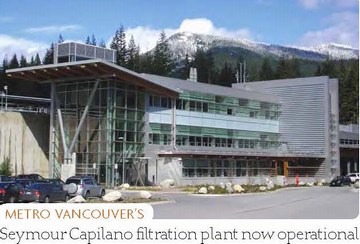Metro Vancouver Water Services has made serious progress on the aggressive water supply issues that have plagued lower mainland building owners for the past 30 years, causing pinhole leaks to form in pipe walls sometimes in less than a decade after construction. Metro Vancouver water services have been making slow but steadily on the problem for the past 15 years and are now reporting the number of complaints is falling off.

The reduced complaints reported by M.V.W.S. may well be in part the result of the plumbing industries changeover to using corrosion resisting non-metallic plumbing systems and the fact that so many of the existing plumbing materials have been epoxy lined, this is still good news for owners of older buildings and buildings that were repiped in the past 20 years using half metal/half plastic systems (a common practise for the past 20+ years).
The news comes too late for owners of older buildings with unlined metal pipes, as years of exposure to the aggressive, low pH, highly chlorinated water has damaged (pitted) the pipe walls, so they will still need to repipe or epoxy line their plumbing systems.
The improvement in the water quality comes as bad news to the water treatment companies that have sprung up around the lower mainland over the past decade, in an attempt to address the pinhole leak problem through water treatment, as this renders their service unnecessary.
A highlight of the report:
5.5 CORROSION CONTROL
Before 1998, the delivered water from all three sources had a pH lower than the aesthetic limit of the GCDWQ of pH 6.5. As part of the upgrade of the water treatment of the Seymour source water, a corrosion control facility using soda ash (sodium carbonate) was put into service at Rice Lake in 1998. A similar facility was added at Coquitlam in 2000 simultaneously with the ozonation facility. Since early 2010 corrosion control for the Seymour source was moved to the SCFP. In the SCFP process, filtered water receives a lime/water slurry to raise its pH and boost its alkalinity before it enters the clearwells; it is finally adjusted with the addition of carbon dioxide gas (CO2). The average pH of the treated water from Seymour and Coquitlam was approximately 7.5 during 2014 and met the aesthetic objective.
The full report can be found at:
